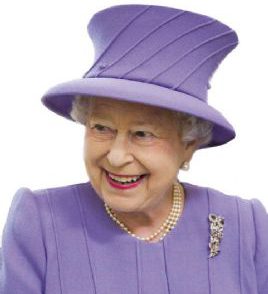In England,
most events in life happen over a good cup of tea, so it came as no surprise
that my discovery of the English in Florence started with one. This cup of tea,
however, was not being served under the grey skies of Britain, but in a
beautiful palazzo tucked in the northeast corner of Florence.
This palazzo has been in my family for the last 120
years,’ said my hostess. ‘It was originally built in 1870 by an English artist
from Hull.’ ‘From Hull?’ I thought. Hull is an industrial port town in England,
an unlikely place for an artist to come from. ‘At that time,’ my hostess
continued, ‘this part of Florence was more English than England.’
This was
when it all began. As I took a closer look at the palazzo, I thought that
William Morris would have been proud. Arts and Crafts design was everywhere:
patterns of nature in the frescoes, sensuous curves of ironwork in the railings
and lamp fittings, and coloured and stained glass in the decoration. I later
discovered that this very British design is still referred to in Florence as
the ‘Liberty’ style, taking its name from Liberty’s department store in London
that championed the look in the late-nineteenth century. Even the ceiling
paintings reveal the origins of the original owner. Looking up from the very
Italian marble bath, one views a scene straight from the English seaside,
complete with striped bathing tents and donkey rides.
For
centuries, Florence has welcomed foreigners, but it was the English and their
American counterparts who left, perhaps, the most lasting legacy. The English gentlemen
on their Grand Tours did much to spread the beauty of Italian art and life, and
English Grand Tourists’ passionate pursuits came home with them: most historic
homes in England are rich with the artistic treasures collected during their
owners’ time in Italy; and the boom in both the building of additional ice
houses on English country estates (for making the delicious Florentine gelato)
and the rise in the courtesan culture of the aristocracy can be traced to the
times of the Grand Tour.
The opening
of a steam-train service from London in the 1850s ushered in the first
tourists. These Victorian travellers could make the journey from London to
Florence in 36 hours, and with their new-found wealth in industry, the habit of
vacationing abroad began. With those on holiday came the popularity of
Victorian progress and English design, which can be seen in everything from the
iron glasshouse of the Giardino dell’Orticultura on via Bolognese to the iron
lamposts and kiosks dotting the Arno and in Piazzale Michelangiolo. English
poets, artists and writers flocked to Florence for inspiration, many calling it
home. Even Queen Victoria fell for the charms of Florence. During a holiday in
1888, the queen acquired a Florentine spitz dog; later known in England as
pomeranians, setting a new craze for the breed in Victorian England.
Following
the footsteps of the Victorians were the turn-of-the-century English
collectors. In collaboration with like-minded Americans, they did much to
secure the heritage of Florence. Establishing collections and restoring villas,
they raised awareness of the fragile nature of heritage and the important role
of caretaker. A visit to the Horne Museum, British Institute Library and the
donated scholarly villas of La Pietra and I Tatti serves as a great reminder
that culture has no boundaries or nationalities. We all have a role to play.
So back to
the Florentine Palazzo and the conversation over a cup of tea. The palazzo was
indeed built by the son of a wealthy shipping entrepreneur from Hull. He found
in Florence what he lacked in industrial England, and Florence found in him a
devoted resident. It may just have been a passing comment over tea, but it
suggested volumes about the role of the Anglo-Americans of Florence throughout
the centuries, a mutual history and an endearing bond between countries.





